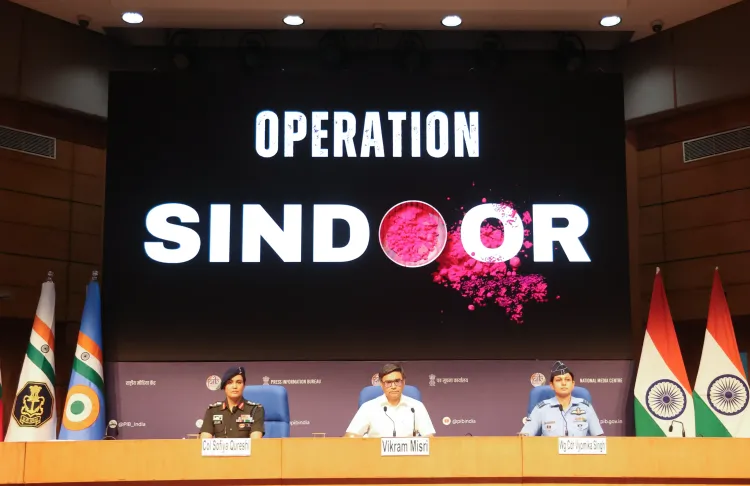Is Pakistan's Terror Strategy Changing After 'Operation Sindoor'?

Synopsis
Key Takeaways
- Pakistan's ISI is adapting to a new, tech-driven terror strategy.
- Smaller camps are being established to avoid detection.
- Drone technology is being integrated into terror operations.
- Intelligence agencies are on high alert due to rising threats.
- India's military response has forced a strategic shift in Pakistan.
New Delhi, Oct 23 (NationPress) In the wake of 'Operation Sindoor', a noticeable calm has enveloped Pakistan-occupied-Kashmir (PoK) as the ISI has withdrawn all its terror assets and operatives due to fears of potential strikes from the Indian military. Terror organizations are struggling to regroup, hindered by diminished resources and low morale; nevertheless, there are ongoing initiatives to establish new terror camps in PoK. The ISI, however, has adapted its approach due to heightened concerns about being detected.
The camps being developed now are notably smaller in scale. A significant shift is the increased emphasis on technology over sheer manpower, suggesting that future operations targeting India will increasingly depend on advanced technological methods rather than traditional forces.
Intelligence Bureau officials indicate that groups like Jaish-e-Mohammad and Lashkar-e-Tayiba are planning to utilize drones for attacks while seeking to integrate modern technology to enhance their operational capabilities. Future plans include deploying equipment to monitor the movements of the Indian Army and Border Security Force, thereby minimizing the risk of detection.
Furthermore, the ISI has equipped these terror outfits with tools designed to circumvent drone surveillance and evade air strikes from the Indian Air Force (IAF).
The size of the terror camps has been reduced, with the ideal number of operatives at a launch pad or camp decreasing from around 100 to approximately 50 as a precaution against potential strikes by the Indian forces.
Before the advent of 'Operation Sindoor', around 40 to 50 camps were active, but this has now been slashed to just 8 camps as part of a new strategy aimed at limiting potential damage.
This new blueprint intends to gradually re-establish the camps with a calculated approach, avoiding any rash moves, as the ISI aims to mitigate risks effectively. This minimalist strategy is seen as a response to India's evolving tactics concerning terrorism originating from Pakistan.
Following the Pahalgam terror incident, the Modi administration made it clear that any act of terror would be regarded as an act of war, not merely a cross-border incident. Although Pakistan may have attempted to project itself as having emerged unscathed after 'Operation Sindoor', the truth is that it suffered significant setbacks, with its military exposed and embarrassed.
The revival of these terror camps has heightened vigilance among both intelligence agencies and security forces.
Post 'Operation Sindoor', Pakistan evacuated nearly 400 terrorists from PoK, all of whom were positioned near the Line of Control (LoC) and International Border, ready to infiltrate into Jammu and Kashmir.
Moreover, the Pakistan Rangers, who typically assist in facilitating infiltration for these terror groups, have also retreated from PoK following the Indian military's significant operations.
Another official remarked that these developments, though concerning, reflect Pakistan's apprehension regarding the Indian military's response.
During 'Operation Sindoor', the Indian armed forces targeted not only sites in PoK but also deep within Pakistan, inflicting substantial damage to major facilities, including the Lashkar-e-Tayiba training camp in Muridke and the Jaish-e-Mohammad headquarters in Bahawalpur.









